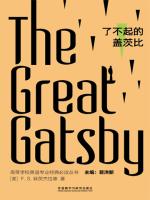The great Gastby
用户777714
The Great Gatsby, penned by F. Scott Fitzgerald in 1925, is a literary
masterpiece that continues to resonate with readers across generations.
Set during the Roaring Twenties, the novel offers a vivid and poignant
portrayal of the era's opulence, excess, and the elusive nature of the
American Dream. The story unfolds through the eyes of Nick Carraway, a
young man from the Midwest who moves to New York in search of
opportunity. Nick becomes entangled in the lives of his wealthy
neighbors, particularly the mysterious Jay Gatsby. Gatsby, a self - made
millionaire, is famous for his extravagant parties, which are attended
by the social elite but are ultimately a means to an end: winning back
the love of his life, Daisy Buchanan. Daisy, now married to the wealthy
and brutish Tom Buchanan, represents the allure of the old - money
aristocracy that Gatsby so desperately desires to be a part of. One of
the most remarkable aspects of the novel is Fitzgerald's character
development. Gatsby is a complex and multi - faceted figure. On one
hand, he is a symbol of hope and the pursuit of a better life, a man who
has risen from humble beginnings to great wealth through his own
determination. However, his wealth is often of dubious origin, and his
obsession with Daisy borders on the pathological. Daisy, on the other
hand, is a beautiful but shallow and morally ambiguous woman. Her voice,
as Gatsby famously remarks, is “full of money,” and she is ultimately
more concerned with her social status and material comforts than with
true love or loyalty. Tom Buchanan, with his arrogance and sense of
entitlement, represents the decadence and corruption of the old - money
class. The themes explored in The Great Gatsby are both timeless and
thought - provoking. At its core, the novel is a commentary on the
American Dream. Gatsby's pursuit of wealth and social acceptance is an
attempt to achieve the ideal of upward mobility that lies at the heart
of the American Dream. However, his failure to win Daisy's love and his
tragic death serve as a powerful reminder of the dream's illusory
nature. Fitzgerald exposes the hollowness and corruption that often
accompany the pursuit of wealth and success, suggesting that the
American Dream, as it is commonly understood, may be nothing more than a
mirage. Another prominent theme in the novel is the theme of time and
memory. Gatsby is haunted by his past with Daisy and is unable to let go
of the idea of recapturing what they once had. His efforts to recreate
the past are ultimately futile, as time has moved on and Daisy has
changed. This theme highlights the inescapability of the past and the
futility of trying to relive it. Fitzgerald's writing style is another
major strength of the novel. His prose is lyrical and evocative,
painting a vivid picture of the Jazz Age. He uses rich imagery and
symbolism to convey the novel's themes and emotions. For example, the
green light at the end of Daisy's dock represents Gatsby's hopes and
dreams, but it also symbolizes the unattainable nature of the American
Dream. The use of color throughout the novel, such as the white of
Daisy's dress, which represents her purity and innocence on the surface
but also her coldness and detachment, adds depth and complexity to the
story. In conclusion, The Great Gatsby is a classic novel that
deserves its place in the literary canon. It is a powerful exploration
of the human condition, the pursuit of the American Dream, and the
decadence of a bygone era. Fitzgerald's masterful storytelling, complex
characters, and thought - provoking themes make this novel a must - read
for anyone interested in American literature or the study of the human
psyche. It serves as a cautionary tale about the dangers of chasing
after an ideal that may be beyond our reach and a poignant reminder of
the fragility of our dreams.



 京公网安备 11010802032529号
京公网安备 11010802032529号